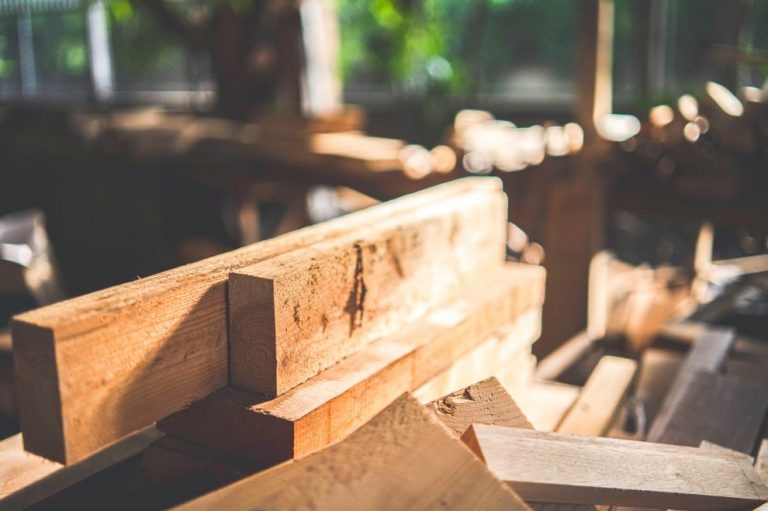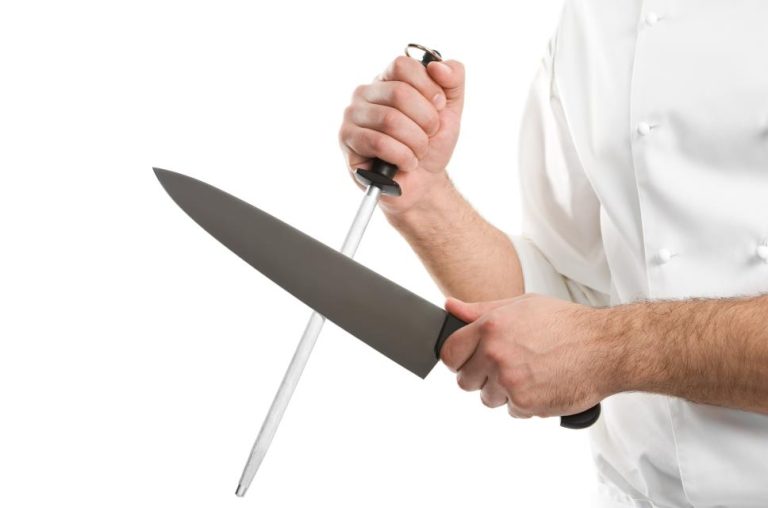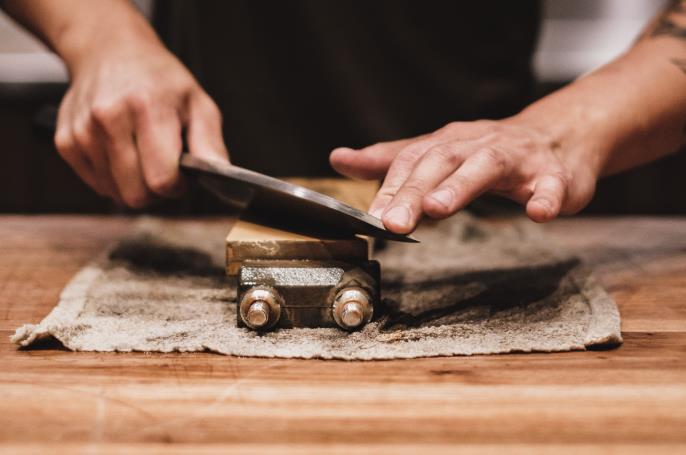All knife blades follow two typical manufacturing processes. They are either forged by a skilled craftsman, or automated by stamping out the blade.
Forged knife blades require more time and labor than stamped knives. They are forged from a single piece of steel shaped into the desired blade shape. This process is not only labor-intensive but also requires craftsmanship and experience.
Both stamped and forged blades can follow similar practices, like heat treatment and tempering, while finishing touches are pretty much the same. However, there are more differences than similarities.
Stamped blades don’t start from a single steel bar. Instead, they are cut from a large steel sheet with lasers or stamped, making them suitable for mass production. The stamped knives reduce production lead times and cost.
While these are simple words to describe how knife blades are made following different manufacturing processes, the results are distinct in critical areas. This comparison article will cover stamped and forged blades, the key differences and similarities, and which one is better for your target customers.
What is a forged knife?
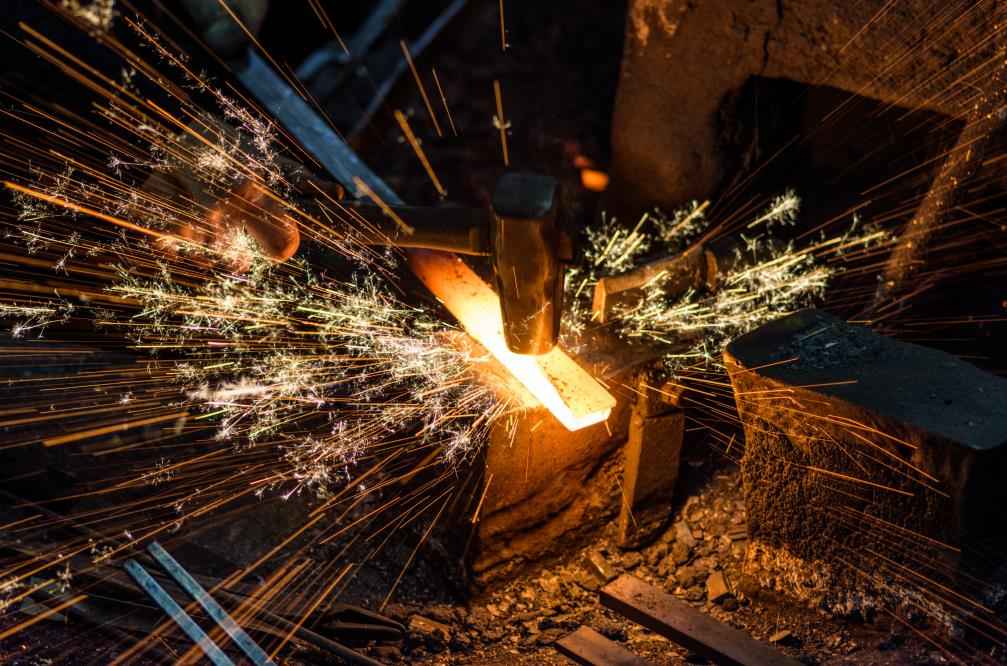
Forged knives aren’t so far off from their name. They are the knife blades produced using the forge, where the metal is heated so that it’s easier to shape by hammering and pressing.
The blacksmith first heats the steel bar or block in the forge during the manufacturing process of forging a knife. It is then pressed and hammered into the desired blade shape. The steel becomes more difficult to shape as the steel gets closer to room temperature. So, it is heated in the forge until the blacksmith perfects the blade design.
Following this, the blade undergoes the same process as any other blade. It is heat-treated to increase hardness and strength, then tempered to reduce excess hardness. Once the blade is ready, the blacksmith grinds the steel to create the cutting edge and polishes the entire blade, readying it for assembling the handle.
Pros
- Produces an overall better blade that holds a sharp edge for longer.
- A thicker blade profile at the spine that’s more durable.
- It can have a bolster if desired.
Cons
- Labor-intensive, driving the cost higher.
- It tends to be heavier due to a thicker spine, bolster, and tang.
Buy Hand Forged Wholesale Knives and Start Scaling up with Us Today
Contact us and connect with a sales rep to get a free quote.
What is a stamped knife?

Stamping is ideal for mass-producing knives. It takes fewer steps to make the blade and is mostly automated with machinery, which cuts down the cost.
As briefly mentioned, stamped knife blades are cut out from a steel sheet. Doing this allows the manufacturer to instantly obtains the perfect blade design. The only thing left to do is heat treat, grind, and polish the blade. However, not all stamped knives are heat treated. This is another major reason why stamped knives are much more affordable.
Stamped knives were mainly seen as low-quality blades due to the steel used for much of their history. This isn’t the case in today’s knife manufacturing though. By using better steel that holds a sharp edge for longer, knife brands selling stamped blades can satisfy many users.
Pros
- It’s usually lighter and easier to control.
- More affordable.
Cons
- Not as sturdy as forged blades.
- It can’t keep its sharp edge for long.
Forged vs. stamped knives
The manufacturing differences between forged and stamped knives are apparent. While the difference may seem something simple, the traits of the end product are very distinct from one another.
Production and price
It takes significantly more resources and labor to forge a knife. Knife manufacturers can deliver more ready-to-ship products by stamping blades than forging in the same period. Due to these factors, stamped knives are significantly cheaper.
The large-scale production is ideal for budget options, and that’s where stamped knives stand out as the best approach for manufacturers. It also provides users with more affordable alternatives.
Considering the amount of usage an average buyer demands from a knife, it makes sense to go with an affordable option than spend $100 on a single blade. Paying more than typical won’t pose a problem to those who continuously use a knife, whether in the kitchen or outdoors. The same users also expect more from a knife from the perspective of performance and durability.
Knife design
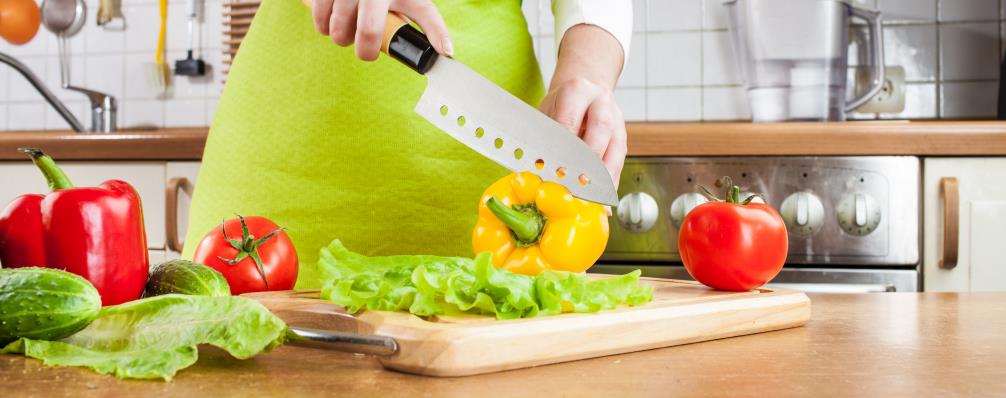
A familiar eye can easily distinguish a forged knife from a stamped one. The cutting edge is the same across forged and stamped knives. The difference is in the tang, spine, and overall thickness. A closer look at these parts can tell if the blade is forged or stamped.
Stamped knives have a unified thickness across the tang, spine, and all the blade parts except the edge. If the handle doesn’t show the tang, an easy way to tell is by looking at the spine. Forged knives have a spine that begins to thin down towards the tip.
Stamped knives have the same, but not as steep as forged knives. The thinning blade profile created with the bevel edge is seen more clearly in forged knives as it’s thicker.
The thin blade profile of stamped knives, depending on the steel, makes them more flexible. The commonly used knife steels for typical use aren’t as hard. Because of this, stamped knives will have some degree of flexibility, while forged knives won’t bend as much. However, – as mentioned – this largely depends on the steel used to construct the blade – more on the hardness below.
Forged knife blades are surely thicker, but the thickness isn’t the same across either. Before creating the edge, knifemakers grind the blade to make it thinner from the spine. They gradually get thinner from the spine to the edge and towards the bolster to the tip. This makes forged knives even thinner than many stamped knives. A slim blade profile like this is more prominent in Japanese kitchen knives.
Tang and bolster
Most stamped knives don’t have a full tang, though large knife manufacturers have started utilizing them in their products lately. Still, most stamped knives come with a partial tang. Since knives like this have less metal in the handle, they have a balance forward.
It’s the other way around with forged knives. They usually have a full tang that improves the general balance of the knife. Forged knives can also feature a bolster, also known as the fingerguard. It adds extra weight to the mid-point of the blade, enabling it to have an even balance.
Depending on the task, a knife with balance forward will aid in cutting. For example, when chopping large amounts of vegetables, the forward-leaning blade will do some of the work for the cook. Nonetheless, most users will have the intention to use it in various tasks. That’s why evenly balanced knives are preferred more.
Performance
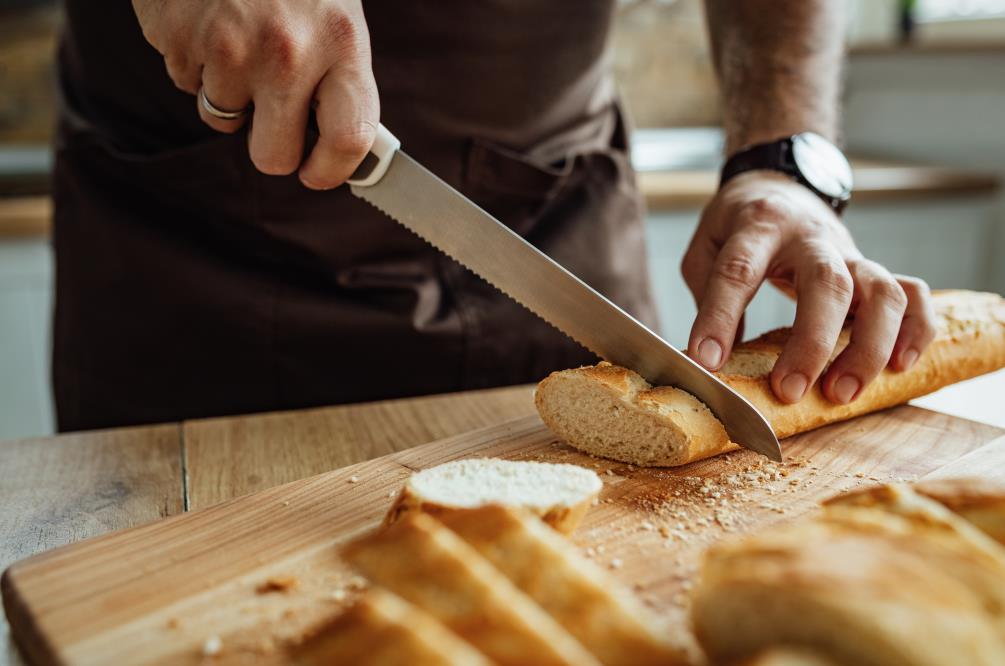
There are a couple of vital things about knives that make them either excellent or just another mediocre blade. The sharpness and how long the blade can sustain this are two foremost considerations.
Because stamped blades are cut out from a steel sheet similarly to using cookie cutters, they are typically softer. The blades made from soft steel will offer superb durability from a toughness standpoint. At the same time, they fail to deliver the same level of edge retention and sharpness the hard steels provide.
For example, one of the hardest knife steels, ZDP-189, is incredibly hard at around 65 to 67 HRc. Using a ZDP-189 steel sheet to cut out a blade would require more resources and wear out the machinery used more quickly than softer steel.
Nonetheless, knife manufacturers can use both hard and soft steel to forge a blade. The same also applies to stamped knives to a degree, but soft steels are more dominant.
Since the main objective of stamped knives is to produce as many blades as possible cost-effectively, utilizing hard steel defeats the purpose. For this reason, forged knives have better edge retention and sharpness than their stamped alternatives.
Durability
Multiple factors affect the durability of a knife. We need to take into account many factors, from the handle material to the steel used to heat treatment and tempering.
Most stamped knives don’t undergo heat treatment, which is considered vital for knife steel. A proper heat treatment will increase the blade’s hardness to the point where its strength is maximized, followed by tempering to reduce excess hardness and brittleness. The outcome is a stronger blade that can flex a little.
Since many stamped knives aren’t heat treated by manufacturers, they aren’t as sturdy as forged blades. However, heat treatment isn’t necessary for all knives. For example, a bread knife won’t need the same durability as a tactical outdoor knife. Although heat treating will undoubtedly bring out the best properties of the knife steel, it isn’t always essential.
The bottom line is that forged knife blades have better durability due to the typical steel used, heat treatment, and thicker blade profile.
Conclusions
| Favored By | Production Lead Time | Manufacturing Cost | Blade Features | Knife Steels Used | |
| Forged Knife | professionals and frequent users | lengthier | costlier | full tang, bolster, certain parts are thicker | all knife steels regardless of properties |
| Stamped Knife | home cooks and average users | fast | more affordable | partial tang, no bolster, unified thickness | usually soft, easy to machine steels |
Notes
The knife steel used also affects production lead time and manufacturing costs.
The lead time, the time it takes for all operations to complete, may vary depending on your location. We also ship directly to customers.
Buy Wholesale Knives and Start Scaling up with Us Today
Contact us and connect with a sales rep to get a free quote.
- Production and price: Forged knives take more time to manufacture, therefore; making them labor-intensive and costlier. When lead time production and cost-efficiency are the primary goals, stamped knives are better for brands.
- Knife design: Forged blades are thicker and heavier, while stamped knives have a unified thickness and are lighter. Forged knives usually have a full tang and sometimes feature a bolster. These usually aren’t found in stamped knives.
- Performance: Forged knives typically have better sharpness, edge retention, and strength. They will cut for long periods without the need for sharpening and are easier to sharpen.
- Durability: Depending on heat treatment, both forged and stamped knives will offer great durability. Yet, most stamped knives aren’t heat treated, holding the blade back from reaching its strength and hardness potential.
Which to choose: forged or stamped knives?
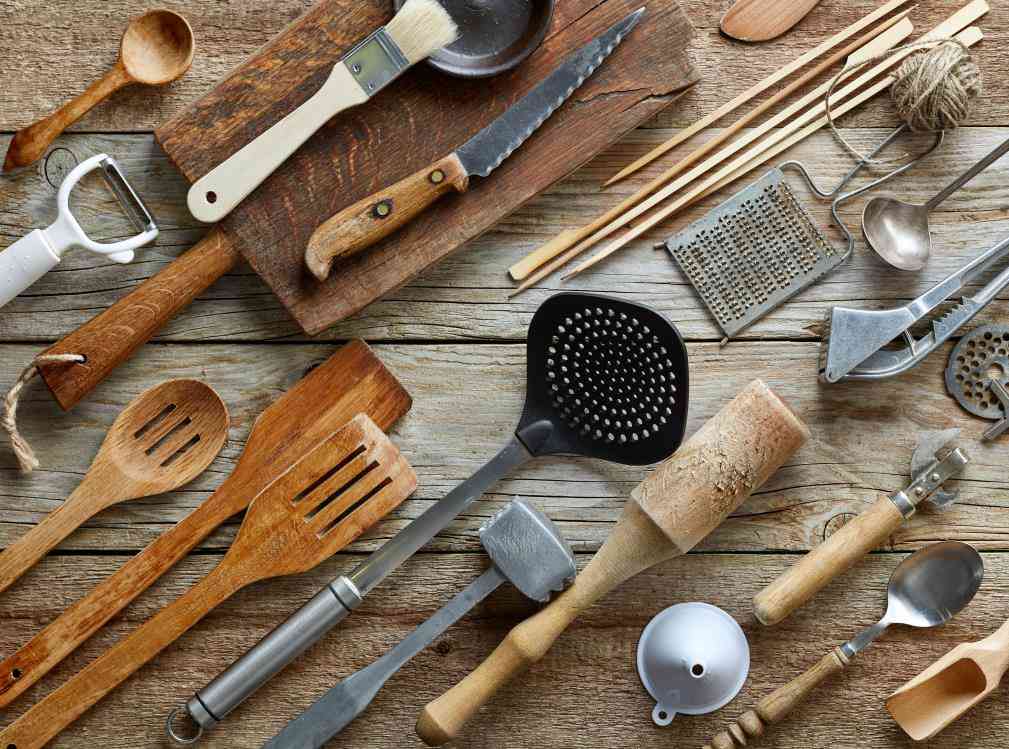
Determining whether forged or stamped knives are better for your target customers is pretty straightforward. It comes down to the traits the users seek and the price they are willing to pay.
Without a doubt, choosing forged knives will present customers with a higher price tag. A frequent user of kitchen knives, a chef or serious cook, for example, won’t mind paying the extra. Someone looking for a simple paring knife to peel vegetables and fruits will.
The same goes for customers going camping once a month looking to buy an outdoor knife compared to another living in a rural area. Luckily, the price most people are ready to pay for a knife goes hand in hand with their expectations.
That said, the overall durability and traits of forged knife blades are more suitable for frequent users. Forged knives are the evident winner if your customers fit into this category.
On the flip side, stamped knives are better for brands targeting average users that want a simple product.
Are stainless knives stamped knives?
Stamped knives can be made with a variety of steels, from carbon steel to stainless steel to high carbon stainless steel. There is no shortage of steel types to be used in stamped knives. The same also applies to forged knives.
However, an overwhelming majority of stamped knives are made from stainless steel. It would be wrong to think all stainless knives are stamped. Stainless steel appeals to more people as it’s low maintenance and demands less care than others, like carbon steel. This makes stainless steel the perfect choice for stamped knives as the target people are the same.
Takeaway
The takeaway is that both forged and stamped knives provide their users with different traits, even though they look identical to an unfamiliar eye. It’s vital for knife brands to pick the most suitable manufacturing method for their customers. Otherwise, the cost, qualities the blades bring out, and customer satisfaction can be badly affected.
Determining the manufacturing method is one of many factors for businesses to get the ideal blade. There is much to be discussed to come up with the right product.
Contact us about your project, anticipated order size, and other details to request a quote. Our professional staff can help you from sourcing to delivering the products directly to your customers.

